The Mildew Children review
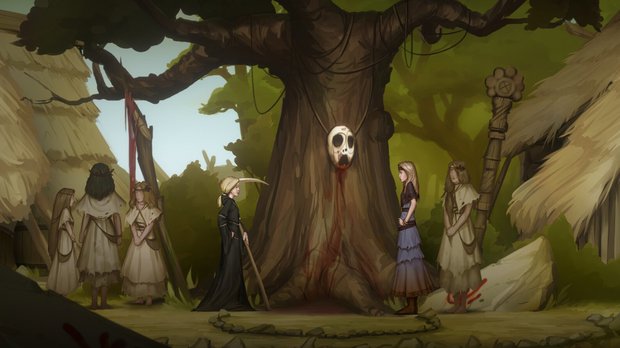
- 3 Comments
Gameplay feels a little unbalanced, but this Scandinavian side-scroller has a bewitching story and presentation
Gather around the fire, and settle down for story hour. We’re heading to northern climes and back in time, to an era of witches and priestesses, of linen clothing and stave huts with moss-covered roofs. There the young adult fantasy-style tale of The Mildew Children might just be able to capture your imagination with its intertwined 2D adventure and visual novel elements. While it’s heavy on dialogue, it also contains tricky balancing-act mini-games to keep you on your toes. But be warned: if the writing doesn’t engage you, you’ll just be left walking back and forth in search of the slightest shred of actual gameplay. I read dozens of books a year, but when playing a game I prefer a tad more puzzle-solving interaction. Nevertheless, this form of narrative fiction is sure to charm its target audience of those who don’t mind the more leisurely playthrough of an interactive novel.
The Mildew Children is filled with references to rituals, the dead, funerals, human sacrifices and rebirths. The Scandinavian community in which it takes place believes heavily in reincarnation, and that life is a ring, with no end and no beginning. Against this backdrop, Kyrphel is one of four witches in a local coven. In a couple of days the Great Dormition (some kind of apocalyptic event) will be unleashed on the village, and only Kyrphel and her sisters can stop it by performing a special ritual. Disaster strikes, however, when one of the other witches perishes before the coven can make the necessary arrangements, effectively weakening their mighty circle of four. While the other two witches argue nonstop about the best way to go forward, Kyrphel realizes there’s only one possible solution: recruit a new witch from a community that pretty much detests them.
Playing as Kyrphel, throughout your quest you’ll encounter lots of young people who will either help or obstruct you, or require something to make them shift sides. Each and every person feels like a character in a novel: your sister witches, the local priestess Littlegrave, the village scribe, the queen-like Mistress and her daughter, the heiress princess, Kyrphel’s guardsman brother, and lots of kids. The village is devoid of older adults, as once someone reaches a certain age, their lives are sacrificed for the greater good, their souls believed to be reincarnated in the first baby born under the third moon.

This all makes for convincing lore, but not a particularly fun or engaging world. The Mildew Children fits into the casual variety of narrative games with a focus on storytelling, delivered through stunning visuals, many dialogue challenges, and a couple of additional mini-games like playing hide and seek with the village kids or picking the correct variety of berries and mushrooms in the forest to use for a ritual.
The tale is told through 12 fairly short chapters (roughly 40 minutes each, leading to an 8-hour experience), and the game autosaves at the beginning of each. Besides that, it gives you the complete freedom to save manually anytime you want, but if you happen to save during a conversation, reloading will take you back to start it again from the beginning.
I came to really appreciate Kyrphel as a great character who wants to serve the greater good but isn’t afraid to step off the righteous path. You can mold her personality through your dialogue choices, though keep in mind that it can have consequences and even influence which ending you’ll get. (I was also surprised to take control of a secondary character during a couple of key scenes, but I won’t spoil their identity).
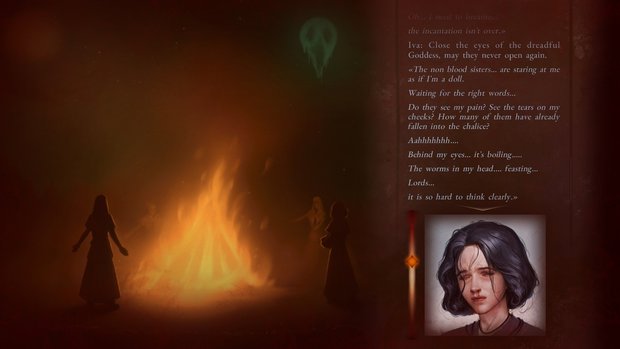
The late medieval-era village featured here is a beautifully drawn and lively one. Loads of small animations charm your travels as you guide Kyrphel through this world: dust motes float around in the sunlight, clouds drift past, plant life sways back and forth, birds ruffle their feathers here and there. Even the breaths of characters in the foreground ripple their clothing, though anyone you can’t interact with will never move an inch and aren’t as sharply drawn, as if they’re simple paintings that are just part of the background. During conversation you will feast your eyes on many highly detailed character portraits that aren’t animated but do transition between different expressions, giving them the feel of a graphic novel.
Surprisingly, there are often scenes in complete silence, lacking any sound or music. Usually you can hear crows cawing, dangling wind chimes, the bubbling brook at the edge of the village, kids’ laughter or the murmurs of a crowd. Music is played on zither-like string instruments that sound creepy, sinister, even threatening in a way that might remind you of horror-themed TV shows. This rich soundscape only emphasizes the contrast of the unusually quiet scenes, especially because the dialogue isn’t voiced – yet. For now all you can do is read what transpires between the characters, but the developers have already announced plans for a voice pack to be added later.
The game has full controller support, but I stuck with the typical WASD keyboard controls for movement: left/right for side scrolling, up/down to enter/exit buildings or change paths. There is no quick travel feature, but you can easily open up a map of the village that shows your location and sometimes a destination, as well as your immediate objective. I found myself flicking open this handy map frequently to find my way around, since the game involves lots of running back and forth. There’s a separate “action” key to examine hotspots or talk to people, though important conversations will start automatically as soon as you walk up to the relevant characters. When wandering around, the environment is shown full-screen. Once dialogue pops up, its frame takes up a third of the right side of the screen. Only during dialogues do you acquire use of the mouse in order to make choices and advance the text, though you could also do that with the directional and action keys.
Most of the challenge of The Mildew Children comes from some peculiar gameplay additions to the dialogues. The easiest version features a pretty traditional rhythm mini-game. Kyrphel will often have to recite incantations, during which little dots of light move across a bar from right to left. You need to click exactly when they pass through a highlighted section on the bar. They can start to come so fast, however, that it’s hard to keep track of the dialogue itself, especially since (currently) no voice actor is reciting the lines for you. But since you need to click to advance the text anyway, once the mini-game is over it’s possible to scroll back up and read what you might’ve missed while you were distracted, though there is a limit to how far back you can go.
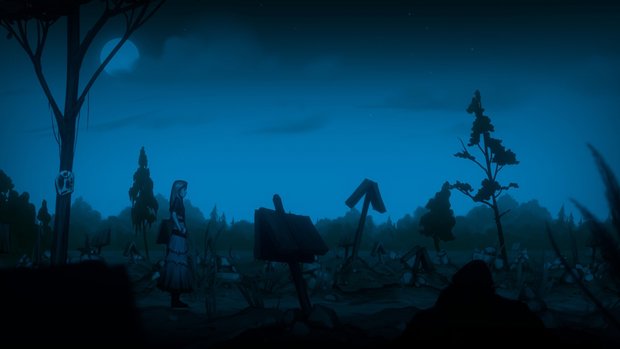
Another challenge involves simple button mashing, basically serving as the equivalent of physically pushing an obstacle out of the way. It too involves a horizontal bar, but this time it works as a pressure gauge. The meter starts off all the way to the right, and by continuously clicking the mouse button as fast as you can, you’re supposed to move it all the way to the left, which is really just a matter of effort and perseverance rather than any real challenge.
What I consider the most difficult mini-game has to do with Kyrphel’s mental but also physical well-being, which is often threatened by high stress levels, indicated by a vertical bar on the left side of her character portrait. You need to push the up and down keys to keep the level in the middle of the bar while advancing the dialogue that’s causing the damage, but it will often shoot towards the edges unexpectedly. Overcompensating by instinctively pushing it too hard the other direction will slingshot it to the opposite edge too fast and worsen the matter, ultimately making you lose complete control of your balance, resulting in Kyrphel’s death. But no worries if you fail, as the game will restore to the moment right before the fateful sequence, and will offer the opportunity to lower its difficulty level. There’s even an option to turn them off completely and just read through the story at these points.
The final challenge encountered during dialogues involves key conversations where you need to convince an important NPC to do your bidding. A vertical bar will appear to the right of the character portrait, with a similar level to the one indicating Kyrphel’s status in the previous mini-game. Only this time, you need to keep that level as high as possible. Your dialogue choices will either pull someone closer to you, or push them away, indicated by either a rising or dropping level, respectively. The goal here is to trigger people in just the right ways. With one NPC, the conversation bar dropped all the way to the bottom during my playthrough, changing some details in the ensuing scene and altering some dialogue options later on. The outcome of different conversations may give you alternate chapter endings, or make you miss a side quest. But there’s one important conversation that can lead to a game-over screen if not handled correctly, though I was able to keep the bar at the top quite easily myself.
There are a couple of high-tension scenes that demand the most of your dexterity with these dialogue sequences. When you find the replacement witch, first you have to convince her to join the coven, then help her survive the initiation ceremony, and of course there’s the Dormition ritual itself. Here it gets rather tricky, because not only do you have to work through a combination of all dialogue challenges, you are also expected to remember the correct incantations you learned earlier from a list of slightly different variations, as well as the correct steps to perform the ritual. You can’t go back and check them, so you’ll have to recall them from memory, which I thought demanded a little too much from players who haven’t done much besides reading long texts the entire game.
How successful you are in these encounters won’t cause massive storyline branches, and you can usually get to the same point by other means, though not always. Especially choosing between telling the truth or lying to people will define which ending you’ll see – something I wish I had known before I started playing, because I was denied the best ending apparently because of something I said chapters earlier. As a good novel needs a great climax, so does a good adventure game, especially one that relies so much on storytelling, so I’d have preferred some sort of warning that I had turned down a path I couldn’t return from. That said, even that “bad” ending felt like a satisfactory conclusion to the quest, just not the optimal outcome I was looking for.
Final Verdict
Though The Mildew Children won’t pose much challenge for experienced adventure gamers, its lovely visuals and intriguing story did keep me glued to the screen. It deals with interesting themes like social acceptance, life after death, religious doctrine, loyalty to friends and family, and lots more. I wasn’t a big fan of the different dialogue mini-games initially, but their utilization during key scenes really does wonders to heighten tension. And tension there definitely is, not only from the world being in jeopardy of having all life sucked out of it, but also between the different characters with opposing belief systems. I didn’t appreciate being punished with a lesser ending for something I didn’t even realize I had done much earlier, but that’s all part of the many choices and branching paths that make the game replayable. More variety and an improved balance between story and gameplay elements would have inspired me to go back and pursue a better ending right away, but instead I need a break from tiring walks around the village and exhausting conversations with its inhabitants before I do. Still, I know there’s more left to discover, and it’s that impressive narrative depth and richness that will surely appeal to fans of choice-driven adventures, whether a young adult or not.
Hot take
The Mildew Children tells a great witch story with impressive lore and tricky dialogue challenges wrapped up in a beautiful side-scrolling presentation, though the endless roaming and long conversations are likely to take their toll on your attention span.
Pros
- Gorgeous 2D adventure combined with a visual novel style of storytelling
- Difficulty level of the dialogue challenges can be adjusted
- Handy overview map helps to find your way
- Lots of choices influence how the story progresses
Cons
- Several scenes are devoid of any sound or music
- Navigating the village can get tiresome
- Sometimes hard to discern what’s important in the lengthy conversations
Johnny played The Mildew Children on PC using a review code provided by the game's publisher.






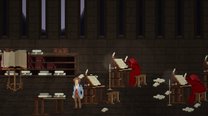
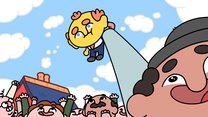



3 Comments
Want to join the discussion? Leave a comment as guest, sign in or register in our forums.
I really like the art style and the fact that it plays in the medieval-era. It's on my wishlist on gog.
Reply
The devs aren't Scandinavian, but Russian. That's why I was reluctant to purchase the Mildew children, but now on discount I bought it anyways - the moral choice is yours to make, personally I don't see this specific game teeming with pro-russian propaganda, so I purchased it. Game itself is absolutely fantastic, I enjoy the very dark atmosphere which creates such nice contrast to some of those heroic pagan movies and games (AC Valhalla, etc...), instead what you get is a community of pagan worshippers that are brainwashed into believing in myths, thus being unable to see reason. There are many interesting topics being discussed aside the main story.
Reply
OMG imagine that. How did you get over our evil and bought something made by our malevolent minds?
Reply
Leave a comment